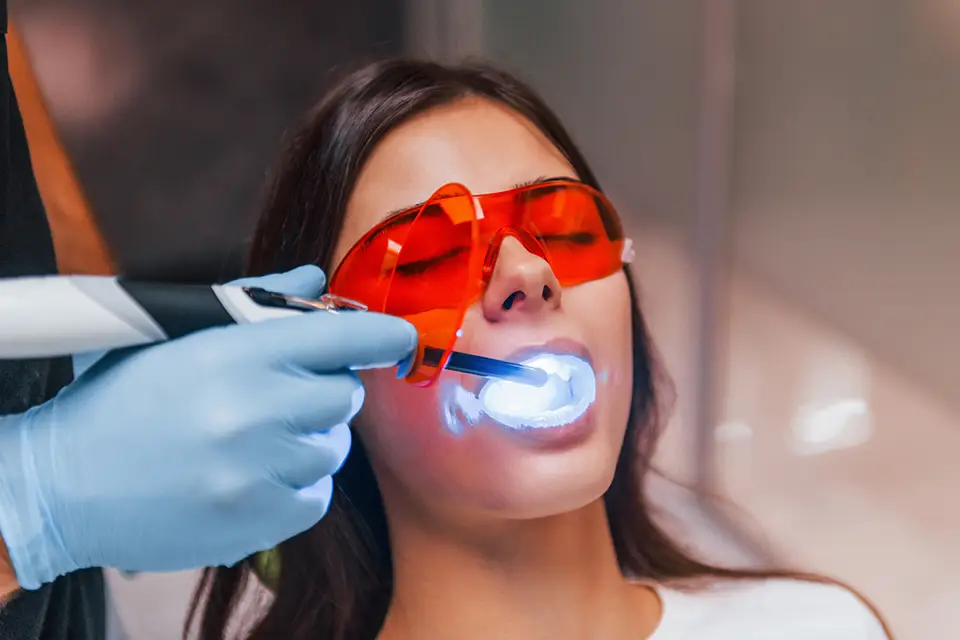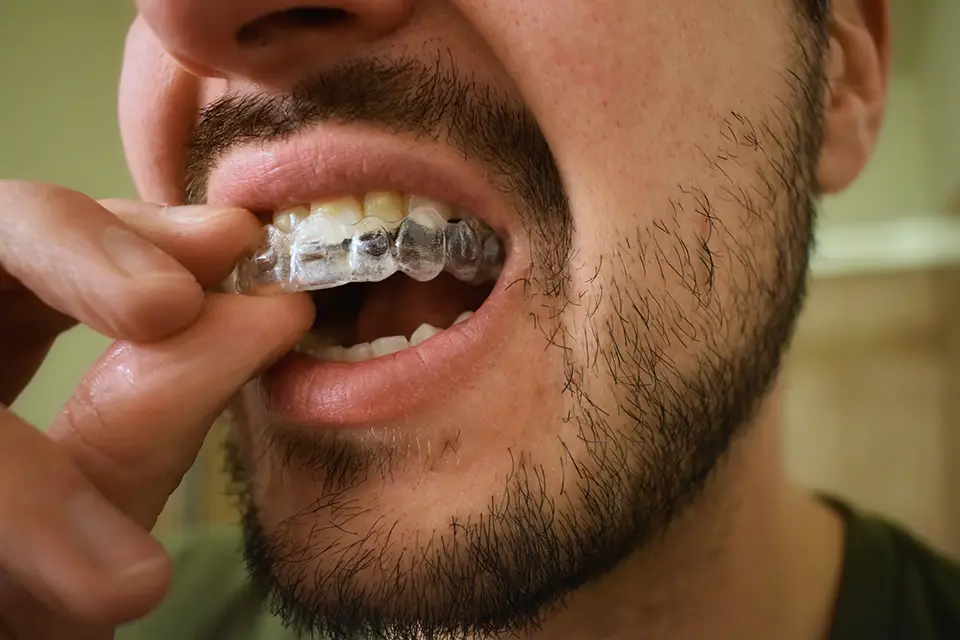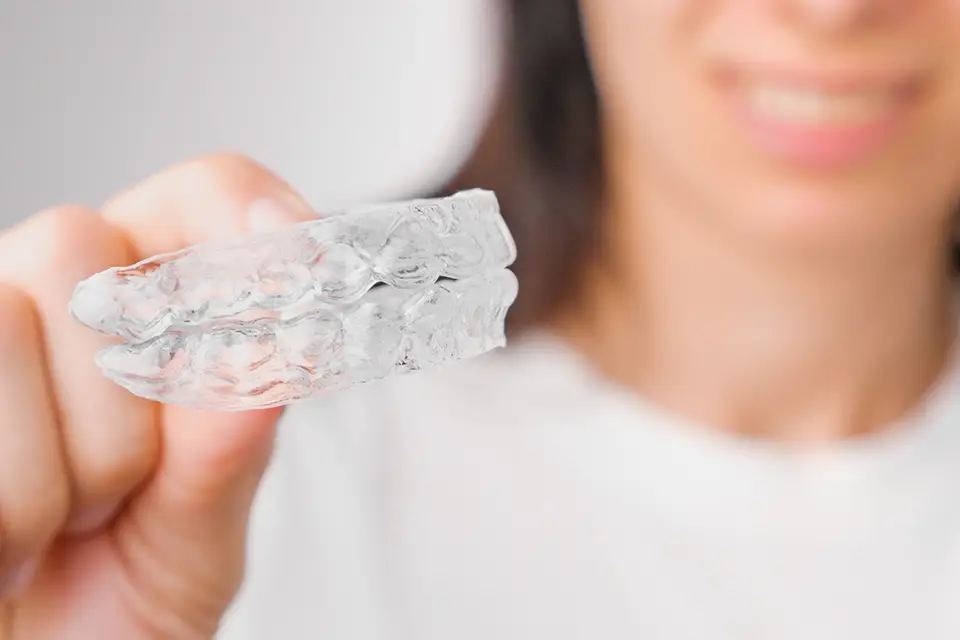Sensitivity shouldn’t keep you from a brighter smile. If ice water, hot coffee, or even cold air makes your teeth twinge, you can still whiten safely—with a plan that respects how your enamel and gums respond. At Sunshine Dentistry in Richmond Hill, we tailor teeth whitening for sensitive teeth so you see a real shade change without that sharp “zing.” In this guide, we’ll unpack what causes sensitivity, which products and techniques are worth your time, and how teeth whitening for sensitive teeth can be both effective and comfortable when done the right way.
Teeth Whitening for Sensitive Teeth: Why Sensitivity Happens
Sensitivity usually comes down to three things: thin or worn enamel, exposed root surfaces (receding gums), and microscopic openings in the tooth that transmit temperature changes to the nerve. Standard bleaching gels can temporarily amplify that sensation. The fix isn’t to give up whitening; it’s to adjust concentration, contact time, and prep—so the gel lifts stains while your teeth stay calm.
Who's a Good Candidate (And Who Should Wait)
Most people with mild-to-moderate sensitivity can whiten comfortably with a personalized protocol. You’ll want a quick exam first—any untreated cavities, leaky fillings, or active gum inflammation should be handled before teeth whitening for sensitive teeth begins. A short pause now prevents a painful flare later.
The Safe Path: Prep Before You Whiten
A little preparation dramatically improves comfort and results:
- Desensitizing Toothpaste (2 Weeks): Look for 5% potassium nitrate and/or stannous fluoride. Brush twice daily for 10–14 days before teeth whitening for sensitive teeth.
- Custom Gel “Primer”: In some cases, we place a professional-strength desensitizer in trays for 10–15 minutes before whitening.
- Gumline Tune-Up: If plaque sits at the margins, bleach irritates gums. A fresh cleaning reduces that risk and helps gels contact enamel evenly.
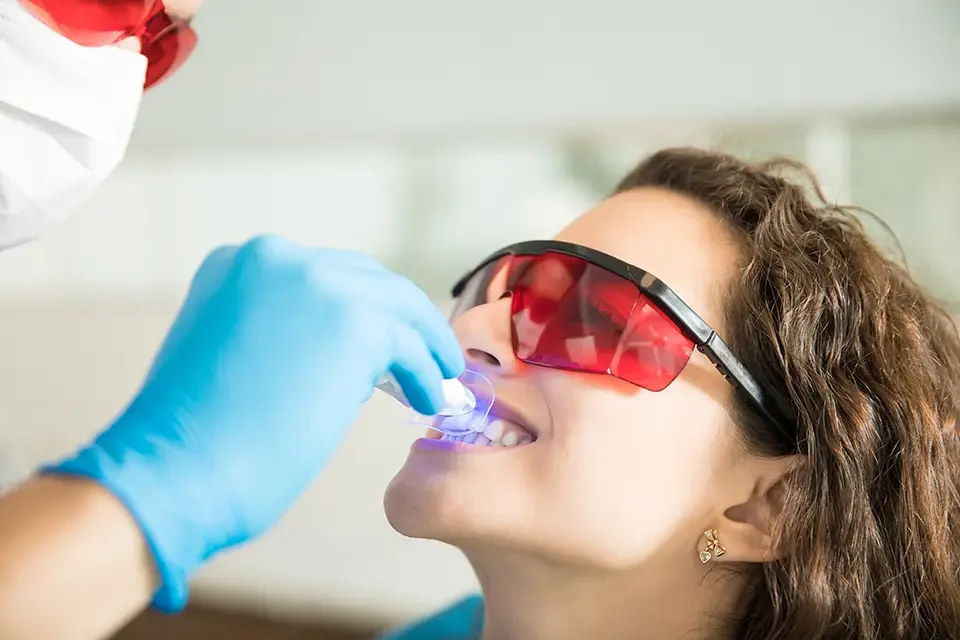
Teeth Whitening for Sensitive Teeth: In-Office Options That Work
Chairside whitening is the fastest route to visible change, but it must be gentler when sensitivity is in the mix:
- Lower Concentration, Staged Sessions: Shorter applications with rest periods between rounds give enamel time to recover while shade moves steadily lighter.
- Precision Isolation: We coat gums with protective barriers so gel only contacts enamel. It’s tedious—worth it.
- On-The-Spot Desensitizers: After each whitening pass, we apply a fluoride or calcium/phosphate varnish to soothe nerve endings and re-seal microscopic pathways.
Most patients see a 2–4 shade improvement the same day, without the “electric” zings they feared.
At-Home Whitening, Designed for Comfort
For many sensitive smiles, slow and steady wins. Custom trays with gentle gels let you control contact time:
- Custom Trays: Made from a scan or impression, so gel stays on the teeth—not your gums.
- Low-% Carbamide Peroxide (10–16%): Worn 60–90 minutes or even every other day at first. This is the backbone of comfortable teeth whitening for sensitive teeth.
- Rest Days: If you feel a twinge, skip a day, use desensitizer in the tray, then resume. Progress continues without drama.
Over 10–14 nights, you typically land at the same endpoint as aggressive systems—just without the spikes.
Teeth Whitening for Sensitive Teeth:Ingredients That Help (What to Look For on the Label)
When sensitivity is part of the picture, formulas matter:
- Potassium Nitrate: Calms the nerve response—think “noise-cancelling” for teeth.
- Fluoride (Stannous or Sodium): Re-hardens enamel after whitening sessions.
- ACP or CPP-ACP (Calcium/Phosphate Complexes): Replenishes minerals to tighten up those micro-tubes that transmit sensitivity.
Brushing with these before and after sessions keeps teeth whitening for sensitive teeth comfortable and consistent.
Teeth Whitening for Sensitive Teeth: What to Avoid (And Why)
A few common habits can make sensitivity worse:
- One-Size “Extreme” Kits: High-octane gels with no guardrails cause burny gums and post-op zings.
- Abrasive Whitening Toothpastes: Grit polishes stains but can thin enamel over time; pick low-abrasive formulas.
- Back-to-Back Sessions: Doubling up rarely doubles results. Give your enamel time to recover between applications.
Teeth Whitening for Sensitive Teeth:Post-Whitening Care That Locks In Results
Colour is most changeable right after whitening. The 48-hour window matters:
- Neutral Drinks and Rinses: Water after coffee or tea reduces fresh stain pickup.
- Whitening “Top-Ups”: One night every few weeks with a low-% gel maintains the shade without re-starting a full course.
- Nightguard if You Clench: Grinding stresses enamel and magnifies sensitivity. Protection helps your results last.
This is where teeth whitening for sensitive teeth becomes a routine, not a rollercoaster.
How Long Do Results Last—and What About Cost?
Most patients enjoy brighter colour for 12–24 months, with small touch-ups along the way. Cost varies by the method you choose and your starting point. In-office whitening tends to cost more up front; custom tray systems are typically lower per use and easier to maintain over time. We review options, outline exact fees, and match the plan to your goals and comfort level.
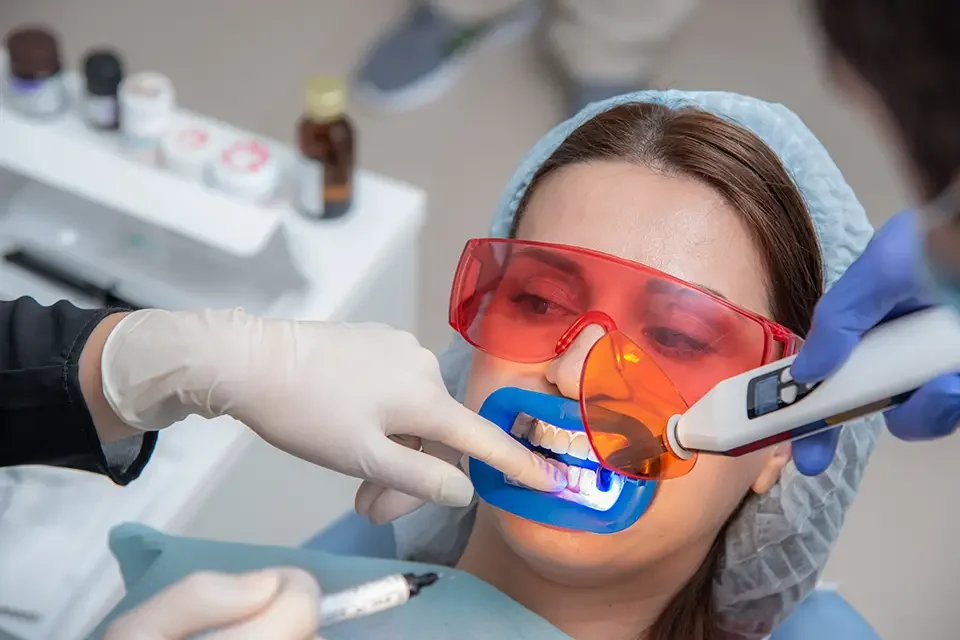
Sample Comfort-First Whitening Plan (What a Real Week Can Look Like)
- Days 1–7 (Prep): Desensitizing toothpaste twice daily; optional tray-based desensitizer 10 minutes nightly.
- Days 8–12 (Whitening Start): Custom trays with 10% carbamide peroxide, 60 minutes every evening; water rinse afterward; desensitizing toothpaste before bed.
- Rest Day as Needed: If sensitivity pops up, pause one night and use tray-based desensitizer only.
- Days 13–14 (Finish): Resume nightly whitening or switch to every-other-night to reach your target shade comfortably.
- Maintenance: One evening every 3–4 weeks (or before an event) to keep the shade steady.
That’s teeth whitening for sensitive teeth in real life—predictable, flexible, and gentle.
Ready to Brighten—Without the Twinge?
If you’ve been putting whitening off because of sensitivity, there’s a gentler way. At Sunshine Dentistry in Richmond Hill, we customize teeth whitening for sensitive teeth to your enamel, your schedule, and your goals—so you get a noticeable shade change and keep your comfort. Book a visit, bring your questions, and leave with a plan that actually fits your smile.
FAQs: Teeth Whitening for Sensitive Teeth
Will sensitivity get worse if I start whitening?
Not if we plan it right. With a brief prep phase, low-% gels, and rest days, teeth whitening for sensitive teeth usually stays comfortable. Most patients report only mild, short-lived twinges—if any.
Is in-office or at-home better for sensitive teeth?
Both work. In-office is faster when carefully staged; at-home offers control and smaller daily doses. We’ll help you choose the route that keeps sensitivity quiet and results steady.
How soon will I see a difference?
Often, within the first few applications. With teeth whitening for sensitive teeth, we’re aiming for a steady shade lift over 10–14 days—not a single dramatic jolt that causes discomfort.
